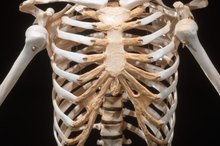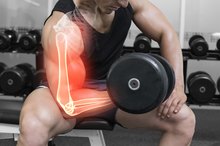How the Skeletal System Works With Other Body Systems
Muscular System
To help the body move freely, the skeletal system works very closely with the muscular system, which contains all the muscles in the body. Each individual muscle in the body is connected to one or more parts of the skeletal system. For example, the biceps brachii muscle is connected to the forearm, and the forearm bone is called the radius. All muscles connected to the skeletal system have the same basic function. They contract and relax to allow the skeletal system to move. Without the skeletal system, the human body would not be able to support itself, but without muscles, the skeletal system wouldn’t be able to move. The general makeup of the skeletal system is cartilage and calcified bone, and these elements allow the bones and muscles to move freely and fluidly together.
Ciruculatory System
Along with giving muscles the support they need to allow the body to move freely, the skeletal system is also necessary for proper function of the circulatory system. The calcified bones of the skeleton work very closely with the circulatory system. A substance known as marrow is created inside bones and aids the production of red and white blood cells. The circulatory system is the system that circulates the red and white blood cells through the body. Red and white blood cells are necessary for the body to function properly, and these cells couldn’t be circulated through the body unless the bones of the skeletal system first created marrow.
Protection
Four Main Parts of a Skeletal System
Learn More
The skeletal system works closely with virtually all the systems in the body to protect them. Because the bones that make up the skeletal system are hard and firm, they are the perfect protectors for the vulnerable organs that make up the body’s systems. The bones' primary function in this sense is to protect organs from impact. For example, the rib cage helps protect the fragile lungs from impact. Multiple organs in the digestive system, reproductive system, urinary system and endocrine system are all protected by different bones. However, the main system that bones help to protect is the nervous system. The nervous system contains the all important brain, which is necessary for all bodily functions. The hard bones of the skull form around the brain and protect the fragile tissue from impact. Without the protection of the skull, any small impact could potentially result in serious injury or even death.
Related Articles
References
Writer Bio
J. Johnson has been completing freelance writing work since September 2009. Her work includes writing website content and small client projects. Johnson holds a degree in English from North Carolina State University.







